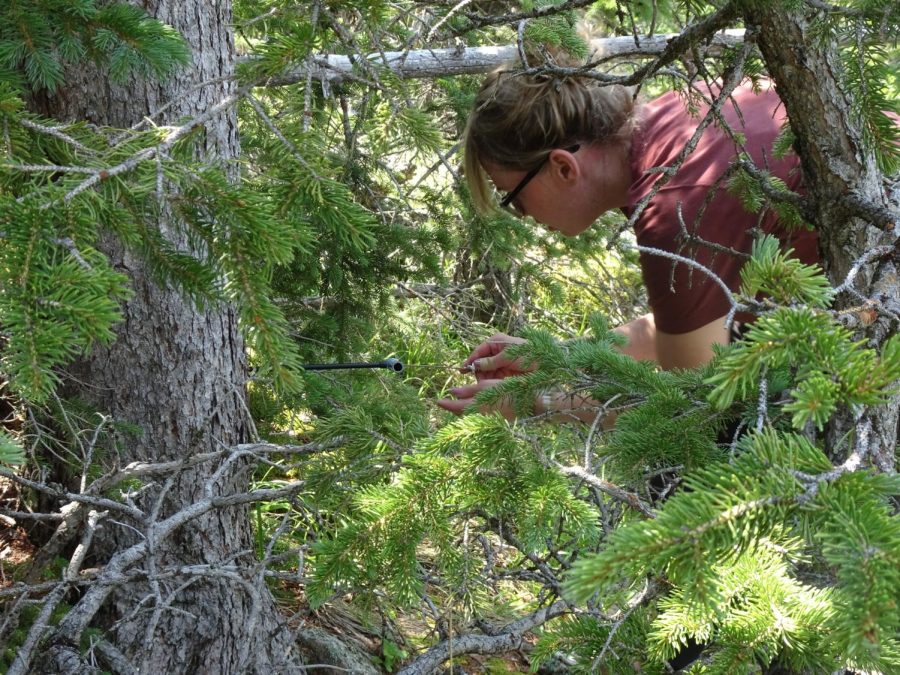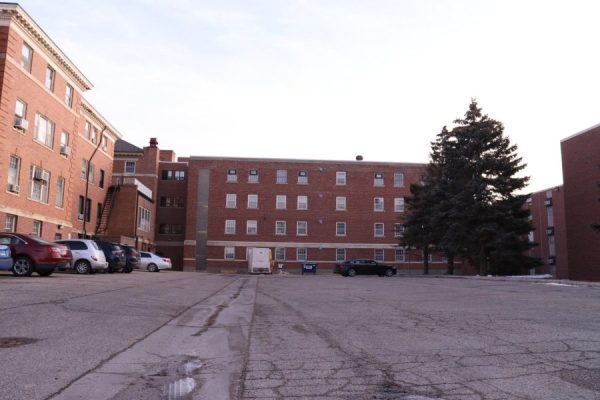Drones: The solution to saving the Black Hills limber pines
If you’ve been to the Black Hills, you may have noticed the Limber Pine. It’s a scraggly, blue-tinted pine tree that grows in the cracks of rocks. The tree doesn’t grow very big, so even the eldest within the grove are unassuming. The limber pine species, however, is an ancient witness, second in age only to the rock spires they grow out of, to the changing climate in South Dakota and the Black Hills thousands of years ago.
Unfortunately, they may not be around much longer.
John Ball, a professor in the department of agronomy, horticulture and plant sciences, is part of a team working to save them.
“[The trees] only occur up in the spires area and then over in Black Elk,” Ball said. “They are native, by that we know they were not planted there.”
The limber pine isn’t unique to South Dakota; the species is all over the Rocky Mountains, and pockets exist in Nebraska and North Dakota as well. The Black Hills, however, is the only known natural grove this far east.
The team is also searching rocky areas on Iron Mountain and Sylvan Peak for other groves of the limber pine. Rocky areas are the most likely place you’ll find the tree, Ball said, because the tree doesn’t do well in forest fires.
His explanation for the remote pockets of trees: South Dakota likely had more of the limber pines during the ice age. As the climate warmed, the tree’s population receded north and left a few isolated pockets high in the Black Hills.
“They’re so few, we’re talking hundreds, not thousands, of trees, that we want to make sure we know every single one of them,” Ball said. “Some are difficult to find because they’re on an edge of a rock cliff, and you don’t know if you’re looking up at a limber pine growing on the rock or if you’re looking at a ponderosa pine.”
Enter drones.
Julie Leidholt, an SDSU graduate and drone pilot, is working with Ball to keep the species in the hills. Thanks to her training with unmanned aircraft systems, Leidholt can pinpoint the tree’s unique hue using aerial footage.
Once the trees are located, Ball and Leidholt are able to go to the grove and age the trees.
“We core sampled all limber pines that were of adult age … and we saw that the average age of the tree was quite old,” Leidholt said. “I think the oldest living tree was over 166 years old.”
Ball and Leidholt also cut out growths in the trees caused by white pine blister rust, which slowly choke the tree.
“If we can prune out the cankers before … it gets into the trunk, we can probably save the trees,” Ball said. “Once they get to a certain size — 20 or 30 feet — the disease usually isn’t fatal.”
Unfortunately for the species, there isn’t a practical solution to stopping the spread of the white pine blister rust.
“The management [of the disease] is going to be difficult because it’s a rust disease, which means it has to spend part of its life on one plant and another part of its life on another plant,” Ball said. “And what white pine blister rust needs is a five needle pine — limber pines are five needle pines — and then it needs a currant bush. Well, we have native currants out there. And we have native limber pines out there. If we kill off one of them, then the disease isn’t there.”
While a currant bush genocide would theoretically work, it would have to be a total annihilation. Even a single surviving bush within a few hundred feet of the trees would undo all of the work and spread the rust.
“You’re not going to just be able to kill the currant bush,” Ball said. “You’re going to kill what’s around it too. Heavens know what else you’d kill.”
Not all limber pine trees have the cankers, which offers hope that some of the trees may be immune, or at least resistant, to the disease. Seeds from those trees are collected, and the seedlings are planted in the groves.
There’s several reasons to plant the seedlings, according to Ball.
“The trouble is [animals] like to eat the seed,” Ball said. “We weren’t getting very good seed germination because everything would go for the seeds the minute the cone ripened.”
Additionally, with such small numbers of the trees, genetic diversity is a concern.
“There’s four major populations,” Ball said. “Collecting seed from one [population] and then planting the seedlings in an adjacent population would give us a little bit more mixing of the genetics.”
The team doesn’t want mixing from other populations in order to preserve the uniqueness of the Black Hills populations.
“If we were to lose this species of trees, we would lose all genetic markers that are associated with the Black Hills,” Leidholt said.
Speculation about the trees’ demise isn’t new. SDSU has collected seeds from the Black Hills populations to preserve them in case things turn for the worse, but Ball and Leidholt don’t expect that to be necessary just yet.
“Even going back to the 1800s, (reports say) [the trees] appear to be dying out,” Ball said. “In other words, no matter when anyone writes about, they say they seem to be dying, yet they’re still there. So they’re not quite done. But they are struggling.”

Jacob Boyko is the News Editor and a senior journalism major with a double minor in political science and social media. Jacob is a huge animal person and...





























